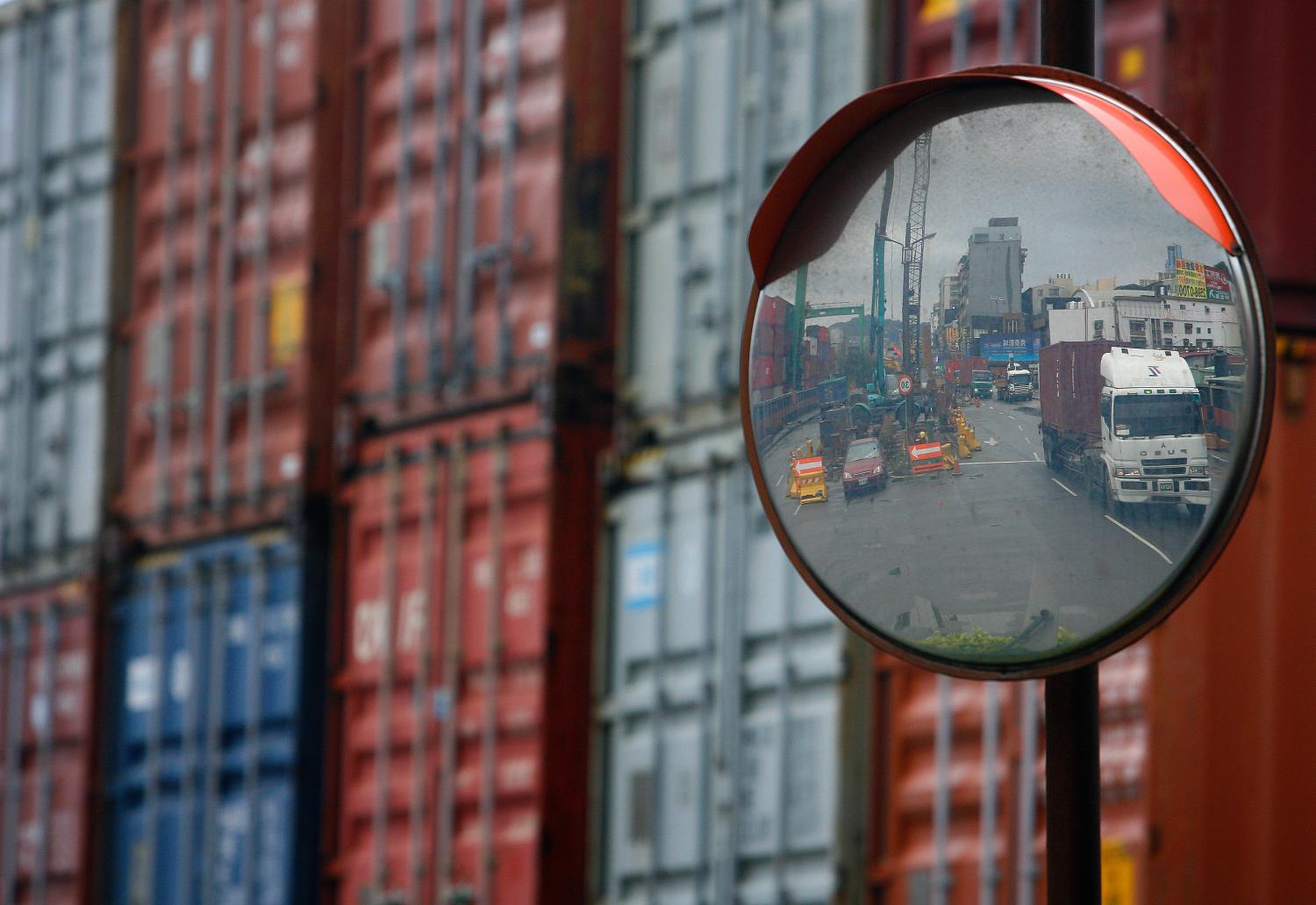Editor’s Note: This East Asia Policy Paper was originally published in September 2013 as a working paper. Updates to the paper have since been made.
Introduction
The following Working Paper provides an overview of Taiwan’s economic structure and the trading relations which have underpinned the globalization of its economy. The Working Paper outlines Taiwan’s economic challenges and analyzes the economic costs for Taiwan of not participating in the growth of regional Free Trade Agreements (FTAs). The Paper discusses why it is important for Taiwan to participate in these FTAs – and in particular the Trans-Pacific Partnership (TPP) – both as a means of retaining competitiveness in its key export markets and perhaps more importantly, as an external driver of domestic economic reform.
Taiwan’s Economy
Taiwan is an economic success. Since 1992, Taiwan’s GDP growth has averaged 4.5 percent. This raised real per capita income from $9,116 in 1992 to $19,762 in 2012, with the result that today Taiwan is the 28th wealthiest country globally, and 6th richest country in Asia. And along the way Taiwan has transformed itself from a dictatorship into a vibrant democracy.[1]
Fuelling this growth in Taiwan has been a rapid expansion in international trade. In 1992, Taiwan’s total trade was over $180 billion and represented 82 percent of GDP. In 2012, Taiwan’s trade represented 140 percent of GDP and was valued at over $650 billion, making it the world’s 19th largest trader even though it is only the 28th largest economy in the world.
Of Taiwan’s goods exports in 2012, approximately 99 percent were from the industrial sector, while agriculture goods comprised around 1 percent of exports. In terms of imports, over 77 percent of Taiwan imports are of agricultural goods and raw material, reflecting Taiwan’s limited arable land and lack of indigenous natural resources. Capital goods are the next largest imports (14 percent), followed by consumer goods (approximately 10 percent).
As these figures demonstrate, Taiwan’s economy is highly dependent on international trade. In fact, from 2005-2012 net exports was the most important driver of growth in Taiwan. Taiwan’s economy focuses on producing parts and components that are incorporated into final products, often sold by companies from Japan, the United States, or European Union.[2] In fact, over 70 percent of Taiwan’s exports comprise intermediate goods. This so-called contract manufacturing has been especially focused in the information and communications technology (ICT) sector. Taiwan produces 94 percent of the world’s motherboards and notebook PCs. And the Taiwan Semiconductor Manufacturing Company produces most of the computer chips used by U.S. companies such Qualcomm and Nvidia. That said, Taiwan also has some global brand names such as Acer and Asus for PCs, and companies such as Quanta and Wistron are original design manufacturers for most global PC brands.[3] Additionally, Taiwan businesses rely heavily on overseas production networks to make goods for export. This varies by sector, but in areas such as ICT, up to 85 percent of Taiwan’s exports are made outside Taiwan.[4]
Taiwan’s Trade and Investment Relations
Over the last twenty years, Taiwan’s changing international trade and investment patterns have been characterized by growing economic interdependence with China in particular, but also East Asia more broadly. For instance, in 1992 China was Taiwan’s 26th most important trading partner with $748 million in total trade (158th export destination and 20th largest import source).[5]
By 2002 total trade with China was worth $18.5 billion, making it Taiwan’s 4th largest trading partner. In 2012, total trade with China was valued at over $121.5 billion (exports to China of $80.7bn and imports of $40.9bn). China is now Taiwan’s most important trading partner – Taiwan’s largest export destination and second largest source of imports – representing over 21 percent of total trade (40 percent of trade including Hong Kong), up from 7 percent in 2002.[6]
Investment in China has also grown substantially over this period and accumulated Taiwan investment in China was valued at over US$58 billion as of July 2013.[7] Most of the investment is in the manufacturing sector such as electronic parts and components (20 percent) and computer electronics and optical manufacturing (14 percent). Investment in China now represents approximately 80 percent of total Taiwanese FDI.
This investment in China has integrated China into the supply chains of Taiwanese businesses. It has also underpinned the movement of goods between and within Taiwan businesses located in China and Taiwan. As a result, the main categories of Taiwan-China trade are in the same sectors where Taiwanese investment in China is located. For instance, Taiwan’s main exports and imports from Chinas are of electrical machinery and equipment (41 percent/42.5 percent) and optical and photographic instruments (15.2 percent/15.5 percent).[8]
A similar story is true for Taiwan’s trade with ASEAN countries which saw an increase in total trade from $33bn in 2002 to $88bn in 2012. Approved foreign investments in and out of Taiwan with ASEAN’s major economies (Indonesia, Malaysia, Philippines, Thailand and Vietnam) also saw a significant increase from $503 million in 2002 to $6bn in 2012. This reflects the integration by Taiwan business of ASEAN into regional supply chains. Some countries such as Vietnam are a source of low cost manufacturing, while in other ASEAN countries such as the Philippines and Malaysia Taiwan companies produce more advanced intermediate goods in the telecoms and IT sectors. Moreover, these goods are then often exported to China for further processing into final goods.[9]
During this period of growing trade with East Asia, Taiwan’s trade relations with the United States have become less significant. For instance, in 1992 the U.S.-Taiwan trade relationship was worth almost $40bn, making the United States Taiwan’s number one trading partner representing over 25 percent of Taiwan’s total trade. By 2002, total trade had increased a little over 12 percent to $45.5bn (compared with an increase in Taiwan-China trade during this period of almost 2500 percent) and by 2012 the United States was Taiwan’s third largest trading partner with total trade worth $56.5bn, representing less than 10 percent of Taiwan trade.[10]
[1] Shelley Rigger, Why Taiwan Matters – Small Island, Global Powerhouse, (Rowman & Littlefield Publishers 2011), pp. 59-94.
[2] Mona Haddad, “Trade Integration in East Asia: The Role of China and Production Networks” World Bank Policy Research Working Paper 4160, March 2007, p. 2.
[3] Economics Intelligence Unit.
[4] Taiwan Ministry of Economic Affairs.
[5] At the time it was illegal for Taiwan companies to invest in China.
[6] Mainland Affairs Council, “Table 1 Trade between Taiwan and Mainland China,” Cross-Strait Economic Statistics Monthly, No. 238 (February 21, 2013); http://www.mac.gov.tw/public/Attachment/322015413549.pdf.
[7] Mainland Affairs Council, “Table 7 Taiwan Investment in Mainland China,” Cross-Strait Economic Statistics Monthly, No. 245 (September 26, 2013); http://www.mac.gov.tw/public/Attachment/392610552343.pdf.
[8] Mainland Affairs Council, Cross-Strait Economic Statistics Monthly, No. 245.
[9] Nobuaki Yamashita and Archanan Kophaiboon (2011), “Trade in Supply Chains between ASEAN and China: Development and Implications,” in Findlay, C. (ed.), ASEAN+1 FTAs and Global Value Chains in East Asia. ERIA Research Project Report 2010-29, Jakarta: ERIA. pp.25-51.
[10] Bureau of Foreign Trade, Ministry of Economic Affairs, “Table 2 ROC’s Major Trading Partners,” Monthly Report 2012/12, http://www.trade.gov.tw/english/Pages/List.aspx?nodeID=92.



